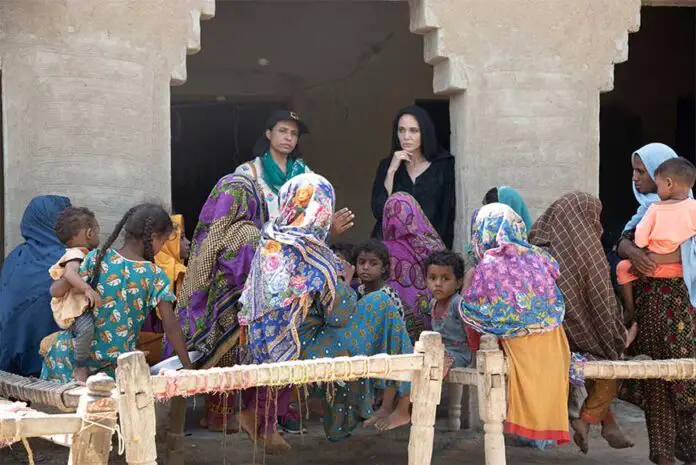Beloved and famous actress, Angelina Jolie, is a United Nations High Commissioner for Refugees, highly respected as a humanitarian in addition to being a talented performer.
Angelina visited Pakistan during the severe flooding that killed more than 1,600 people.
She was watched worldwide on television and online, arriving in Karachi, in the Southern Sindh province, where the ravaging floods killed more than 962 people since June, and left about half a million people displaced and homeless.
According to the International Rescue Committee (IRC), Angelina Jolie’s visit was to help support victims and bring awareness to the effects of the climate crisis in the country and in the world. In a tweet shared by the IRC, they wrote about Jolie’s experience in Pakistan and the highlights of her trip. Angelina had also visited Pakistan after the devastating floods of 2010 and the 2005 earthquake.
Pakistan experienced extreme flooding in June 2022 due to monsoon rains that were heavier than usual. Before the rain, both Pakistan and India went through an extreme heat wave, with temperatures as high as 121°F in some parts of the countries. The heat wave resulted in the death of 65 people in Pakistan and contributed to the massive flooding.
A state of emergency due to the flooding was declared by the government and three days later, Pakistan’s climate change minister announced that about a third of the country was buried under water.
On September 20, UNICEF announced that the devastating floods had destroyed thousands of homes, and devastated public health facilities, schools, and water systems. Over three million children in the country lost their homes and are at risk of malnutrition, drowning, and waterborne diseases.
United Nations officials say that the flooding in Pakistan has affected almost eight million people, and that they are trying to bring relief items to the flood victims who lost their homes. They reported that more than 1600 people had died, more than half being women and children.
Makeshift hospitals have been treating hundreds of thousands of people with waterborne diseases. Over 2.5 million people were treated for waterborne diseases since July, and malaria and diarrhea cases are rising. Healthcare facilities were said to be “overwhelmed.”
In addition to the heavy human toll, the disaster has cost the Pakistani economy an estimated $30 billion in damages.

